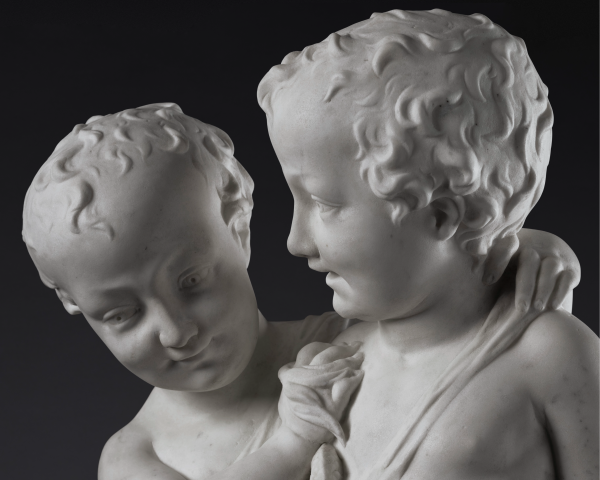
Last November, audiences had the once-in-a-lifetime opportunity to experience rare and newly discovered masterworks by some of the greatest artists of the Italian Renaissance, including Tintoretto, Antonio Lombardo, and Benedetto da Rovezzano, in a special exhibition at Colnaghi New York. Featuring five exquisite sculptures alongside a newly attributed portrait painting by the great Venetian master Jacopo Tintoretto, the exhibition marked a rare occasion in which such a significant number of museum-quality works from the Italian Renaissance appeared on the market at one time.
On view in New York from November 5, 2021, through February 2022, Renaissance built on Colnaghi’s longstanding history of bringing great masterworks from the Italian Renaissance to the United States. The special presentation provided a prelude to Colnaghi’s collaborative exhibition with Venetian Heritage, which opened at the Ca’ d’Oro in Venice in April 2022, coinciding with the Venice Biennale.
“Old Master paintings, prints, drawings, and sculpture have formed the core of Colnaghi’s business since the gallery’s founding in 1760. Our history of bringing great Italian Renaissance works to the United States is equally celebrated and dates back to our early dealings with Isabella Stewart Gardner, Henry Clay Frick, and Andrew Mellon, whose Gilded Age collections have become the bedrock of major American museum collections today,” said CEO Jorge Coll.
“Presenting an exquisite work of art to the public accompanied by new, considered and insightful scholarship is a thrilling experience—this is especially the case in Renaissance, as so many of the works we are offering are new discoveries” added Chloe Stead, Senior Global Director. “We are excited to be bringing these masterworks from the Italian Renaissance to our New York gallery and to be fostering this level of connoisseurship more broadly within the industry.”
Among the exhibition highlights was Benedetto da Rovezzano’s St John the Baptist (circa 1510), a new attribution to this talented Florentine High Renaissance sculptor, who completed Michelangelo’s bronze sculpture of the David (no longer extant) and also played a key role in introducing the Italian Renaissance to England during the reign of Henry VIII. Depicting a youthful figure of the saint, with lively modelled hair and powerfully characterized physiognomy seated on a carved pedestal, the sculpture was made in Florence during the time when Leonardo, Michelangelo, and Raphael worked there. The quality and finish of work speaks to Rovezzano’s mastery of the medium and is comparable to other terracotta works by the artist in London’s Wallace Collection and at the Bargello Museum in Florence. The work was first exhibited online in Colnaghi’s TEFAF presentation in September 2021.
Exhibited in the U.S. for the first time was Antonio Lombardo’s Death of Lucretia (circa 1510). Discovered in a private European collection in 2020, the marble marked an important addition to the oeuvre of the one of the leading Venetian sculptors of the Renaissance, whose family workshop during the late 15th and early 16th centuries pioneered the development of Renaissance sculpture in the city, drawing inspiration from antique sculpture. Sculpted in high relief, the marble harks back to classical depictions of Lucretia who in the Colnaghi relief is shown plunging a dagger into her chest, flanked by the grief-stricken figures of an old man, presumably her father, and a female attendant.
The only canvas presented within the exhibition was a rediscovered portrait of Tommaso
Rangone by Jacopo Tintoretto (circa 1555-6). The attribution of this impressive portrait had been
long overlooked, as had the identification of the sitter, but thanks to the cleaning, conservation,
and technical analysis overseen by Colnaghi, the original handling of the master and the
unmistakable likeness of Rangone have become apparent. Rendered in a flowing crimson velvet
cloak with gestural brushstrokes, the portrait is a powerful image of a man who was one of the most colourful personalities in Venetian society in the mid-sixteenth century
and among the most important patrons of Tintoretto.